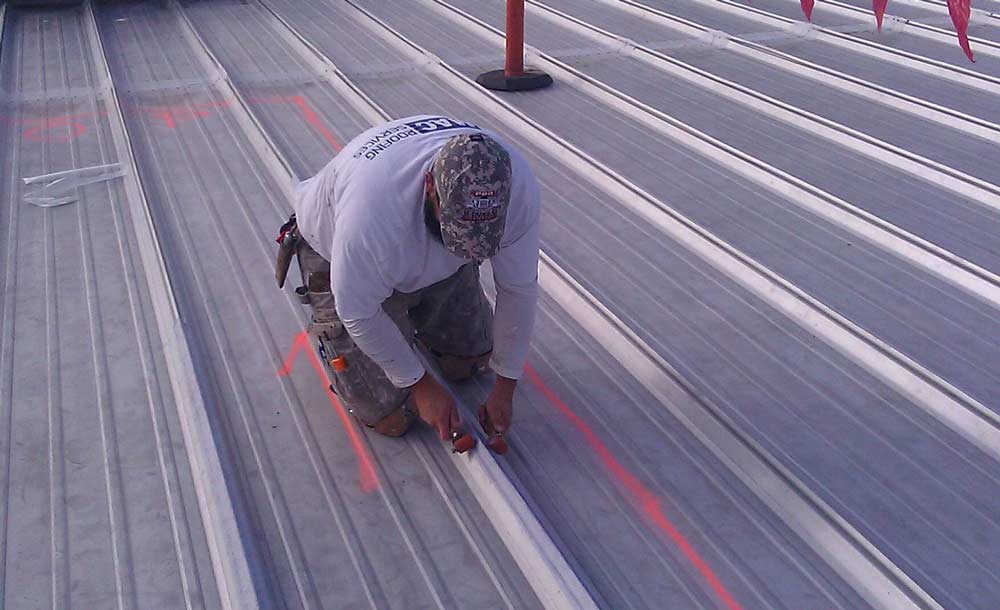The Importance of Recoating Foam Roofs: Protect Your Investment
MAC Roofing Services MAC Roofing Services • January 15, 2025
RECOATING 101
When it comes to commercial or residential roofing, foam roofs are an excellent option due to their durability, energy efficiency, and cost-effectiveness. However, like any roof, foam roofs require regular maintenance to continue performing at their best. One crucial aspect of this maintenance is recoating. In this blog post, we'll explore why recoating foam roofs is so important and how it can extend the life of your roof, improve energy efficiency, and protect your property.
Foam roofs are made from a spray-applied polyurethane foam that is lightweight, seamless, and highly insulative. When properly installed, foam roofs create a smooth, durable surface that is resistant to leaks, water damage, and extreme weather conditions. Over time, however, the foam’s surface can wear down, which is where recoating comes in.
The frequency of recoating depends on several factors, including the climate, the level of foot traffic, and the original installation quality of the foam. However, as a general rule of thumb, most foam roofs should be recoated every 5 to 10 years to maintain their protective features. If you notice any visible damage, such as cracks, discoloration, or signs of wear, it’s important to schedule a recoating sooner rather than later.
Contact us today to learn more about our foam roof recoating services and how we can help protect your home or business!
What is Foam Roofing?
Foam roofs are made from a spray-applied polyurethane foam that is lightweight, seamless, and highly insulative. When properly installed, foam roofs create a smooth, durable surface that is resistant to leaks, water damage, and extreme weather conditions. Over time, however, the foam’s surface can wear down, which is where recoating comes in.
1. Protects the Foam from UV Damage
The sun's ultraviolet (UV) rays can cause significant damage to foam roofs. Over time, UV exposure leads to the breakdown of the foam, causing it to become brittle and more susceptible to cracking and water infiltration. Recoating your foam roof with a reflective, UV-resistant coating creates a protective barrier that prevents the sun’s rays from directly affecting the foam. This prolongs the life of your roof and maintains its strength and effectiveness.2. Improves Energy Efficiency
Foam roofs are already known for their excellent thermal insulation properties, which help to keep indoor temperatures regulated and reduce energy costs. Recoating your foam roof with a reflective coating enhances this energy efficiency by reflecting heat and sunlight away from the building. This reduces the amount of heat absorbed by the roof, which in turn lowers cooling costs in warmer months. In areas with hot climates, recoating your foam roof can lead to significant savings on your energy bills.3. Prevents Water Damage and Leaks
Foam roofs are highly resistant to water damage, but as they age, they can become more vulnerable to leaks and cracks. Recoating helps to fill in small imperfections and provide a waterproof layer over the foam. This ensures that rainwater, snow, and other forms of moisture do not seep into the roof or the structure of your building, preventing costly water damage and potential structural issues down the line.4. Enhances Aesthetic Appeal
A roof that’s been exposed to the elements for years can begin to look worn and weathered. Recoating your foam roof can restore its appearance, making it look like new again. Many modern coatings are available in a variety of colors, so you can even enhance the visual appeal of your roof to match your building’s exterior. A fresh coat not only improves curb appeal but also adds value to your property.5. Extends the Lifespan of Your Roof
Foam roofs, when properly maintained, can last for decades. Recoating is an essential part of this maintenance. By reapplying a protective layer every few years, you can significantly extend the lifespan of your foam roof, delaying the need for costly replacements. This investment in recoating helps you avoid more expensive repairs in the future and ensures your roof continues to perform optimally for years to come.6. Cost-Effective Roof Maintenance
Recoating your foam roof is a relatively low-cost maintenance solution compared to complete roof replacement. Not only is it an affordable way to preserve your roof, but it also helps prevent more extensive and costly repairs that may arise if damage goes unaddressed. Recoating is a smart and proactive approach to ensuring the longevity of your foam roof without breaking the bank.When Should You Recoat Your Foam Roof?
The frequency of recoating depends on several factors, including the climate, the level of foot traffic, and the original installation quality of the foam. However, as a general rule of thumb, most foam roofs should be recoated every 5 to 10 years to maintain their protective features. If you notice any visible damage, such as cracks, discoloration, or signs of wear, it’s important to schedule a recoating sooner rather than later.
Conclusion
Properly maintaining your foam roof with regular recoating is essential to preserving its functionality and extending its lifespan. Whether you’re protecting your roof from UV damage, improving energy efficiency, preventing leaks, or enhancing its appearance, recoating is a small investment that pays off in the long run. Don't wait for visible issues to arise—schedule a recoating for your foam roof today and enjoy a safe, energy-efficient, and long-lasting roofing system.
Contact us today to learn more about our foam roof recoating services and how we can help protect your home or business!
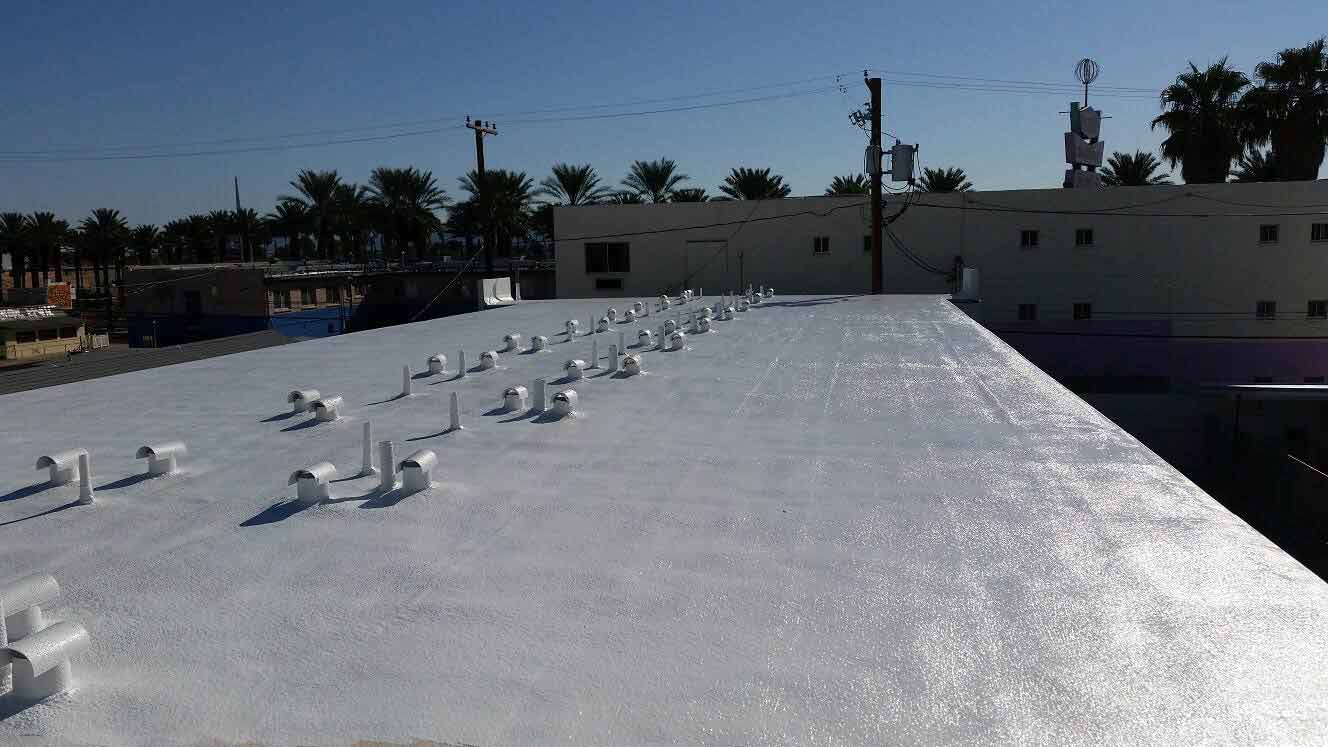
Foam roofing is a popular and highly effective roofing solution, particularly in areas with extreme weather like Las Vegas. However, despite its growing popularity, there are still several misconceptions about foam roofing that can make homeowners hesitant to consider it. In this post, we’ll debunk some of the most common myths about foam roofing, so you can make an informed decision about whether it's the right option for your home or business. Myth #1: Foam Roofing Is Weak and Easily Damaged Debunked: One of the biggest myths about foam roofing is that it’s weak and easily damaged. In reality, foam roofing is incredibly durable. When applied correctly, it forms a hard, solid layer that can withstand heavy rain, extreme temperatures, and even minor impacts. While foam roofs can be punctured by sharp objects or heavy debris, they are significantly more resistant to damage compared to traditional roofing materials like asphalt shingles. Plus, if any damage does occur, foam roofing is easy to repair, often without needing to replace the entire roof. Myth #2: Foam Roofing Is Only for Flat Roofs Debunked: Another misconception is that foam roofing is only suitable for flat roofs. While foam roofing is particularly effective on flat or low-slope roofs, it can also be used on pitched roofs. Foam’s versatility means it can be applied to various roof types and configurations. It adheres well to both flat and sloped surfaces, making it an excellent choice for both residential and commercial buildings. The seamless nature of foam roofing helps eliminate issues like leaks, which are especially common in pitched roofs with joints and seams. Myth #3: Foam Roofing Isn’t Energy Efficient Debunked: Some people think foam roofing doesn’t provide any energy-saving benefits, but this is far from the truth. Foam roofing actually has excellent insulating properties. When sprayed onto a roof, foam expands to form a thick, seamless barrier that prevents heat transfer. This helps keep your home or business cooler during the hot Las Vegas summers by reducing the amount of heat entering the building. The result? Lower energy bills and less reliance on air conditioning. Additionally, foam roofing can reflect UV rays, further improving its energy efficiency and reducing cooling costs. Myth #4: Foam Roofing Requires Frequent and Expensive Maintenance Debunked: Many people believe that foam roofs require constant upkeep and are costly to maintain. In reality, foam roofing is a low-maintenance option. It doesn’t need to be replaced every few years like traditional roofing materials, and the maintenance it does require is minimal. Periodic inspections, clearing debris, and re-coating the foam roof every 10 to 15 years are usually all that’s needed. The re-coating process is affordable and relatively simple, ensuring the roof stays in top condition for decades. Myth #5: Foam Roofing Doesn’t Last Long Debunked: Some homeowners worry that foam roofing won’t last as long as other roofing materials, but that’s simply not the case. A properly installed foam roof can last for 20 to 30 years or more with minimal maintenance. In fact, when you consider its long lifespan and energy-saving benefits, foam roofing can be a more cost-effective option than traditional materials that may need to be replaced or repaired more frequently. As long as the roof is regularly maintained and recoated when necessary, it will provide reliable protection for many years. Myth #6: Foam Roofing Is Only for New Roofs Debunked: Foam roofing is often thought of as being only for new construction, but it can also be applied to existing roofs. In fact, foam roofing is an excellent option for roof replacements or repairs. Since foam can be sprayed directly over most existing roofing materials (such as shingles, tile, or metal), it saves you the hassle and expense of tearing off and disposing of the old roofing material. This also reduces the environmental impact, making foam roofing a more sustainable option for homeowners and businesses looking to upgrade their roofs. Myth #7: Foam Roofing Is Hard to Apply Debunked: Some people believe that foam roofing is difficult to install, but in fact, it’s a relatively quick and straightforward process when done by professionals. The foam is applied as a liquid and expands once it’s sprayed onto the roof. This seamless, one-step application process is faster than installing traditional roofing materials, which require multiple layers and components. Additionally, foam roofing doesn’t require the use of nails, adhesives, or fasteners, making the installation process cleaner and less disruptive. Myth #8: Foam Roofing Doesn’t Look Good Debunked: While foam roofing might not have the same aesthetic appeal as other roofing materials like tile or wood shakes, it can still be visually appealing. Foam roofing is usually coated with a layer of reflective, UV-resistant material that can be customized to match the color of your home or business. It’s a smooth, uniform surface that can enhance the look of your roof, and because it reflects UV rays, it can even improve the overall curb appeal by reducing the heat absorbed by your roof. Myth #9: Foam Roofing Can’t Handle Extreme Weather Debunked: One of the most persistent myths about foam roofing is that it can’t handle extreme weather conditions like heavy rain, high winds, or hail. On the contrary, foam roofing is highly resilient to a wide range of weather conditions. It provides a waterproof seal that prevents leaks, and its flexible nature allows it to expand and contract with temperature changes, making it ideal for regions with extreme temperature fluctuations like Las Vegas. Additionally, foam roofing can withstand strong winds and hail damage much better than traditional shingles, which are prone to cracking or flying off. Myth #10: Foam Roofing Is a Temporary Solution Debunked: Foam roofing is often seen as a "quick fix" or temporary solution, but in reality, it’s a long-term investment. Foam roofing systems can last for decades if properly maintained. With proper installation and periodic maintenance, a foam roof can be just as durable, if not more so, than traditional roofing systems. Recoating the foam every 10-15 years ensures its longevity and continued performance, providing excellent protection for your home or business for many years. Conclusion Foam roofing is a durable, energy-efficient, and cost-effective roofing solution that has been misunderstood due to these common myths. Whether you’re looking to install a new roof, replace an old one, or upgrade your existing roof, foam roofing offers a wealth of benefits that can provide long-lasting protection and savings. By debunking these myths, we hope you have a clearer understanding of how foam roofing can be a reliable and smart choice for your home or business. If you're interested in learning more about foam roofing or need a professional installation, don’t hesitate to reach out to us today!
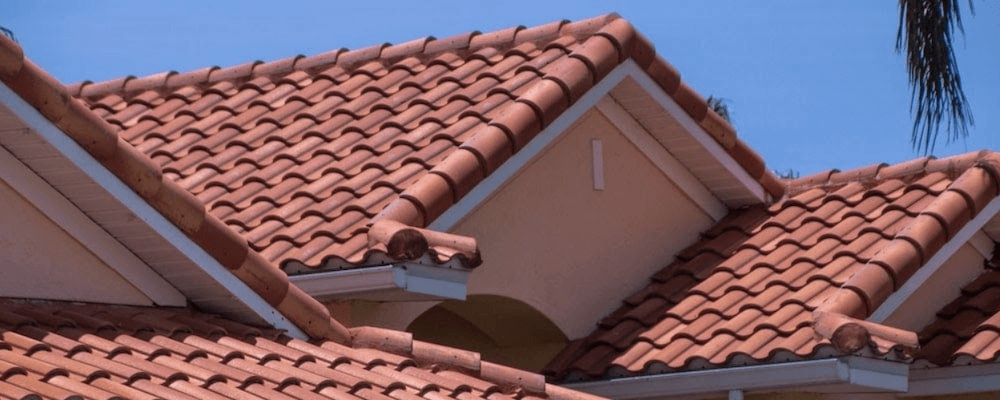
Roof tiles are one of the most popular roofing materials for homes in Las Vegas and many other regions due to their durability, aesthetic appeal, and long-lasting performance. However, just like any other roofing material, roof tiles don’t last forever. Over time, they can become damaged or worn out due to extreme weather conditions, general wear and tear, or aging. So, how long can you expect your roof tiles to last, and when should you repair them? In this post, we'll answer these questions and provide guidance on how to maintain your roof for optimal performance. How Long Do Roof Tiles Last? The lifespan of roof tiles can vary depending on the material, quality, and environmental factors. Here's a breakdown of the most common types of roof tiles and how long you can expect them to last: Clay Roof Tiles: 50+ Years Clay tiles are incredibly durable and can last over 50 years, or even longer if properly maintained. They are highly resistant to heat, fire, and even pest infestations, making them an ideal choice for the desert climate in Las Vegas. However, the life of clay tiles can be affected by severe weather conditions, particularly if they’re subjected to frequent strong winds or large hail. Concrete Roof Tiles: 30-50 Years Concrete tiles are another durable option, lasting anywhere from 30 to 50 years. They are more affordable than clay tiles but can still withstand the harsh sun and occasional monsoon storms that Las Vegas is known for. Like clay, concrete tiles can crack or break under extreme pressure, such as from heavy debris or falling branches, so they require proper maintenance. Slate Roof Tiles: 75-100 Years Slate tiles are the longest-lasting of all roof tiles, with a lifespan of 75 to 100 years or more. Their durability makes them a premium option, but they come at a higher upfront cost. Slate tiles are known for their natural beauty and long lifespan, though they can be more susceptible to cracking if subjected to heavy impacts. Metal Roof Tiles: 40-70 Years Metal tiles are a newer option but offer excellent durability, with a lifespan of 40 to 70 years depending on the metal type (e.g., aluminum, steel). They are lightweight, fire-resistant, and resistant to extreme weather conditions, making them well-suited for Las Vegas. Factors That Affect the Lifespan of Roof Tiles While the material of the tiles plays a significant role in determining how long your roof lasts, several other factors can also impact the lifespan of your tiles: Weather Conditions : In Las Vegas, the extreme heat can cause roof tiles to expand and contract, potentially leading to cracks and damage. Occasional heavy rain and dust storms may also cause wear on your roof tiles. Installation Quality: Proper installation is critical to the longevity of your roof tiles. Poor installation techniques can result in tiles shifting, cracking, or becoming loose, significantly shortening their lifespan. Maintenance: Regular maintenance, such as cleaning debris, inspecting for damage, and ensuring proper drainage, can help extend the life of your roof tiles. Tiles that are well-maintained are less likely to deteriorate prematurely. Age of the Roof: Even the best-quality roof tiles will eventually reach the end of their lifespan. Over time, natural weathering and the wear and tear of daily life take a toll on the tiles, making it essential to monitor their condition. When Should You Repair Your Roof Tiles? Roof tiles are generally low-maintenance, but they do require periodic checks to ensure they’re in good condition. Here are some signs that indicate it’s time to repair or replace your roof tiles: Cracked, Broken, or Missing Tiles If you notice cracked, broken, or missing tiles on your roof, it’s essential to address them as soon as possible. Damaged tiles can lead to leaks and further deterioration of the underlying structure. A professional roofer can replace individual tiles to prevent more extensive damage. Visible Leaks Inside Your Home Leaks are a clear sign that your roof tiles may no longer be providing adequate protection. If you notice water stains on your ceiling or walls, it's time to have your roof inspected and repaired. Leaks could be caused by broken tiles, improperly sealed areas, or worn-out flashing. Sagging or Uneven Roof If your roof appears to be sagging or has an uneven slope, it may indicate that the underlying structure has been compromised. This could be due to damaged roof tiles, weakened trusses, or other structural issues that require immediate attention. Granules in Your Gutters (for Asphalt Roofs) If you have an asphalt roof with tile-like shingles, granules in your gutters are a sign that your shingles are breaking down. While not immediately urgent, this issue can shorten the lifespan of your roof, so it’s best to inspect and repair it before the damage worsens. Excessive Moss or Algae Growth While some moss or algae growth can be normal, excessive growth can indicate moisture buildup, which can eventually damage your roof tiles. Clean your roof regularly, and if the problem persists, consider professional cleaning or repairs. Aging Roof (More Than 20-30 Years) If your roof is over 20 to 30 years old, it’s a good idea to have it inspected regularly. Even if tiles appear intact, the materials may have deteriorated over time, and it might be time to consider a full replacement. Conclusion Roof tiles are designed to last a long time, but they do require attention and maintenance to ensure they reach their full potential. Whether you have clay, concrete, slate, or metal tiles, knowing the signs of damage and understanding when to repair or replace tiles will help you protect your home from the elements and maintain the structural integrity of your roof. Regular inspections, timely repairs, and proactive maintenance are essential to keep your roof in great shape for years to come. If you're unsure about the condition of your roof tiles or need assistance with repairs or replacements, don’t hesitate to contact a professional roofing company in Las Vegas. A well-maintained roof can save you money in the long run by preventing costly repairs and increasing your home’s overall value.
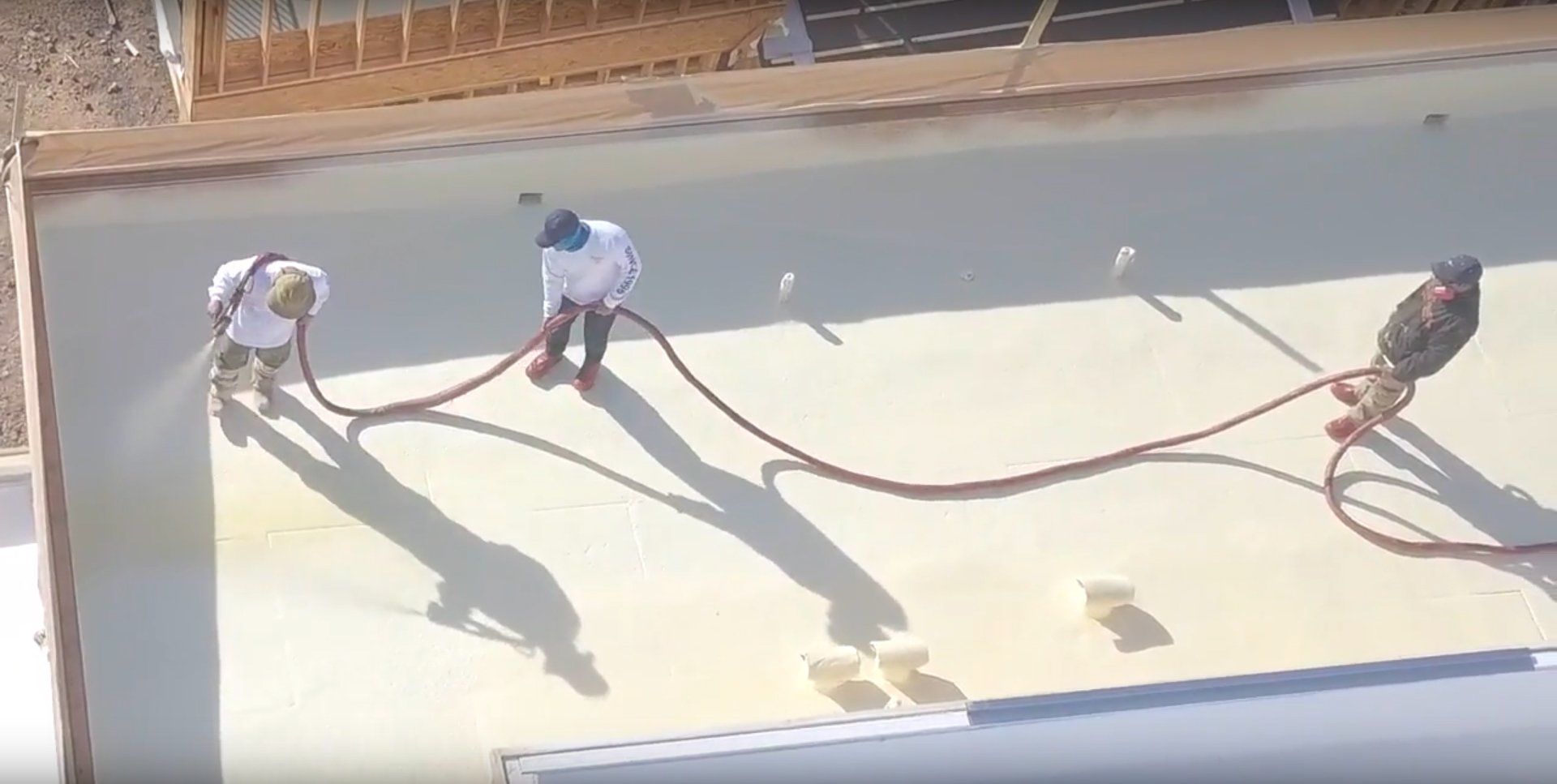
Welcome to our comprehensive guide on foam roofing! Whether you're a homeowner looking to upgrade your roof or a contractor searching for reliable solutions, this post will cover everything you need to know about foam roofing. We'll explore its benefits, the installation process, and essential maintenance tips to ensure your roof stands the test of time.
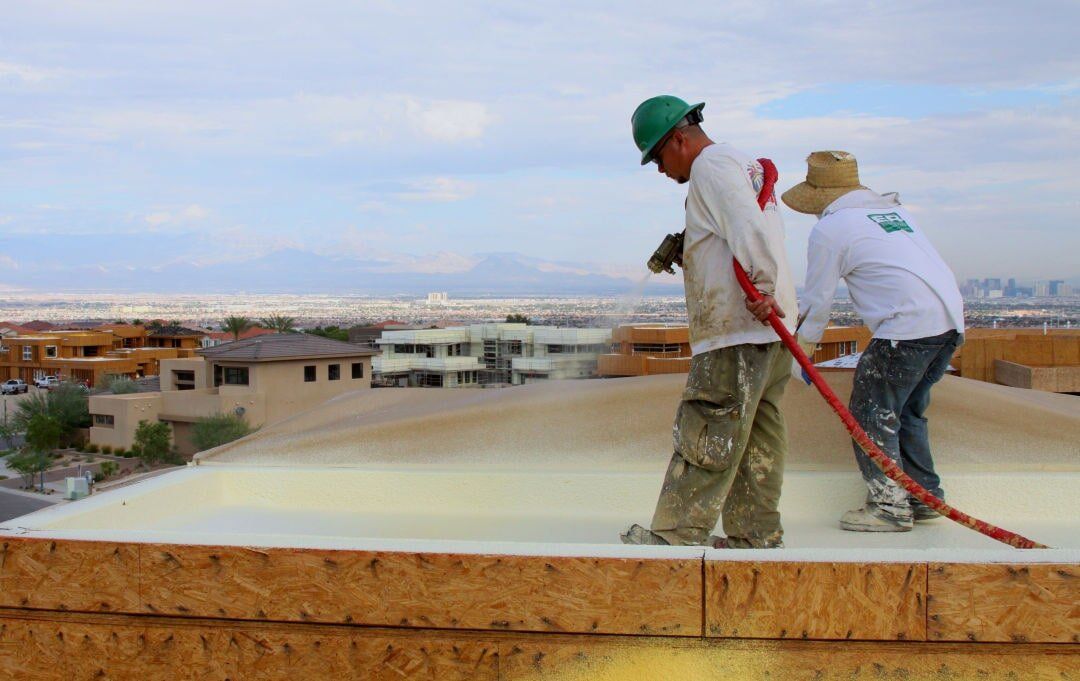
When it comes to roofing, whether for commercial or residential properties, the stakes are high. Your roof not only protects your building but also plays a significant role in its overall value, energy efficiency, and safety. Choosing the right roofing company is crucial to ensuring that your investment is well-protected and that you receive top-notch service. In this blog post, we’ll explore why selecting the right roofing company is essential and why we stand out as the best choice for both commercial and residential roofing projects.

